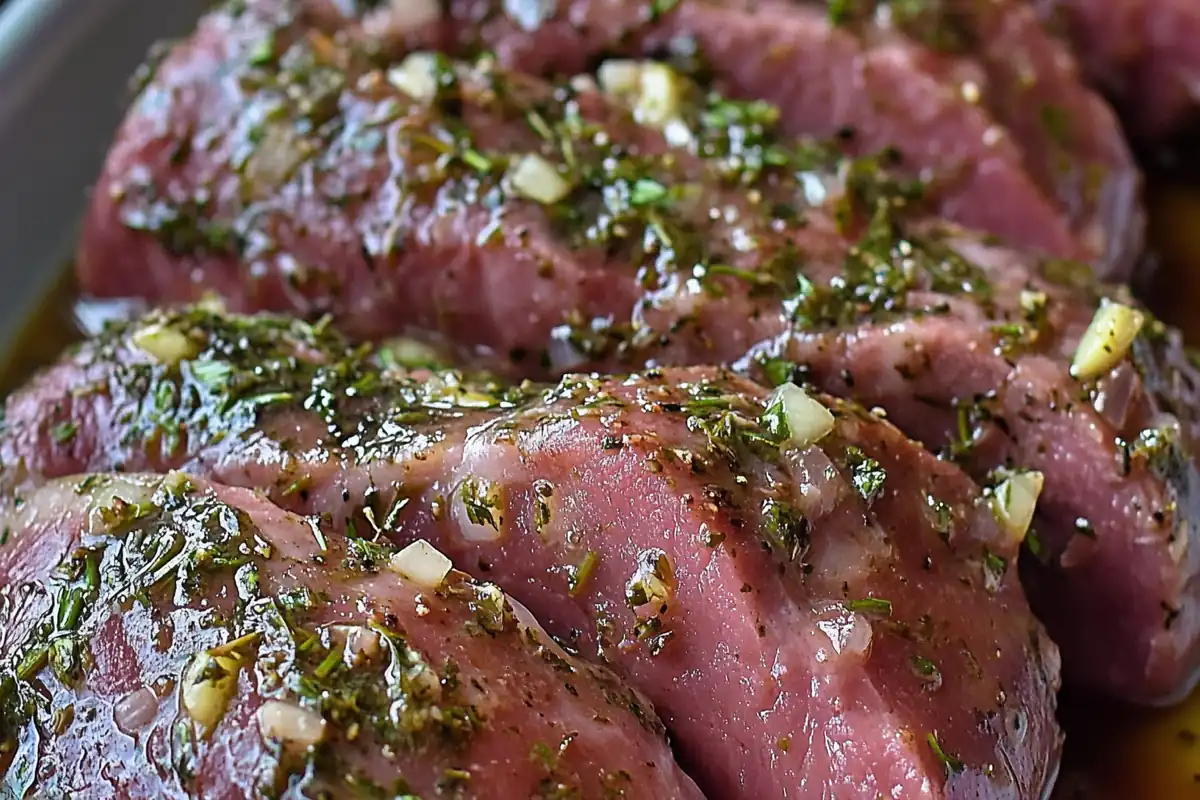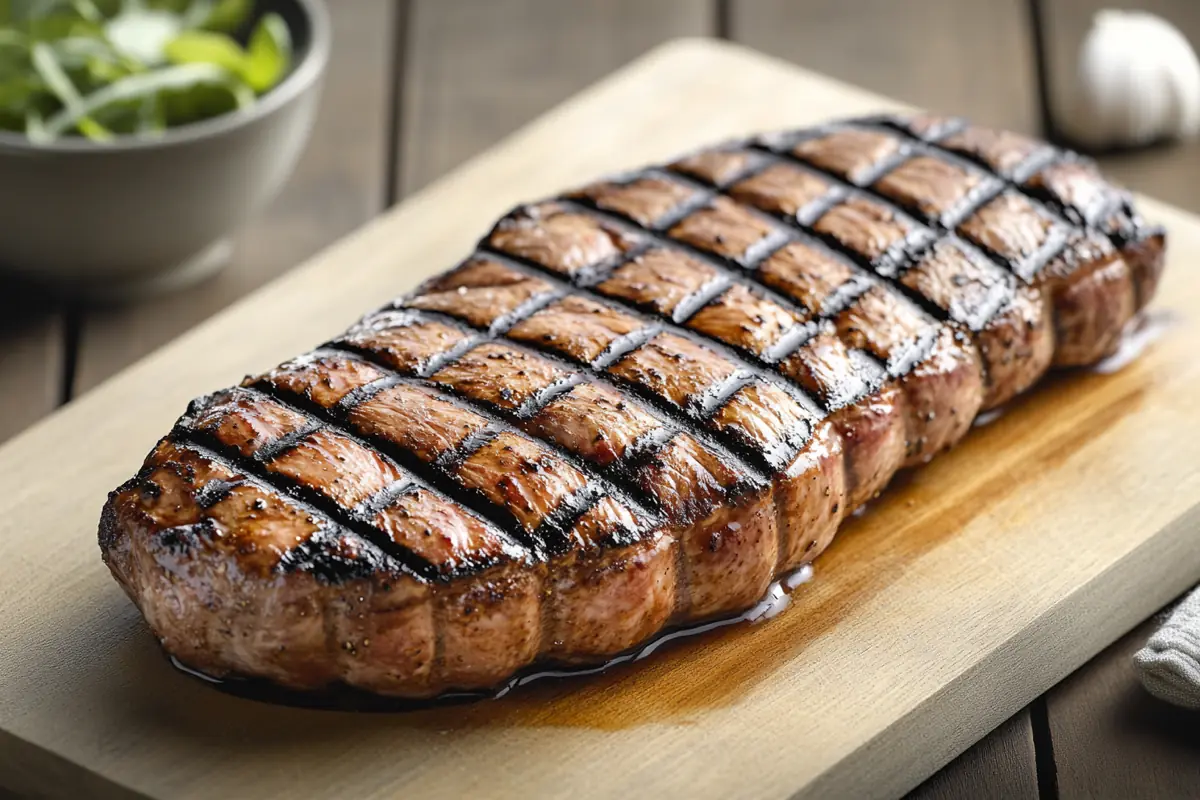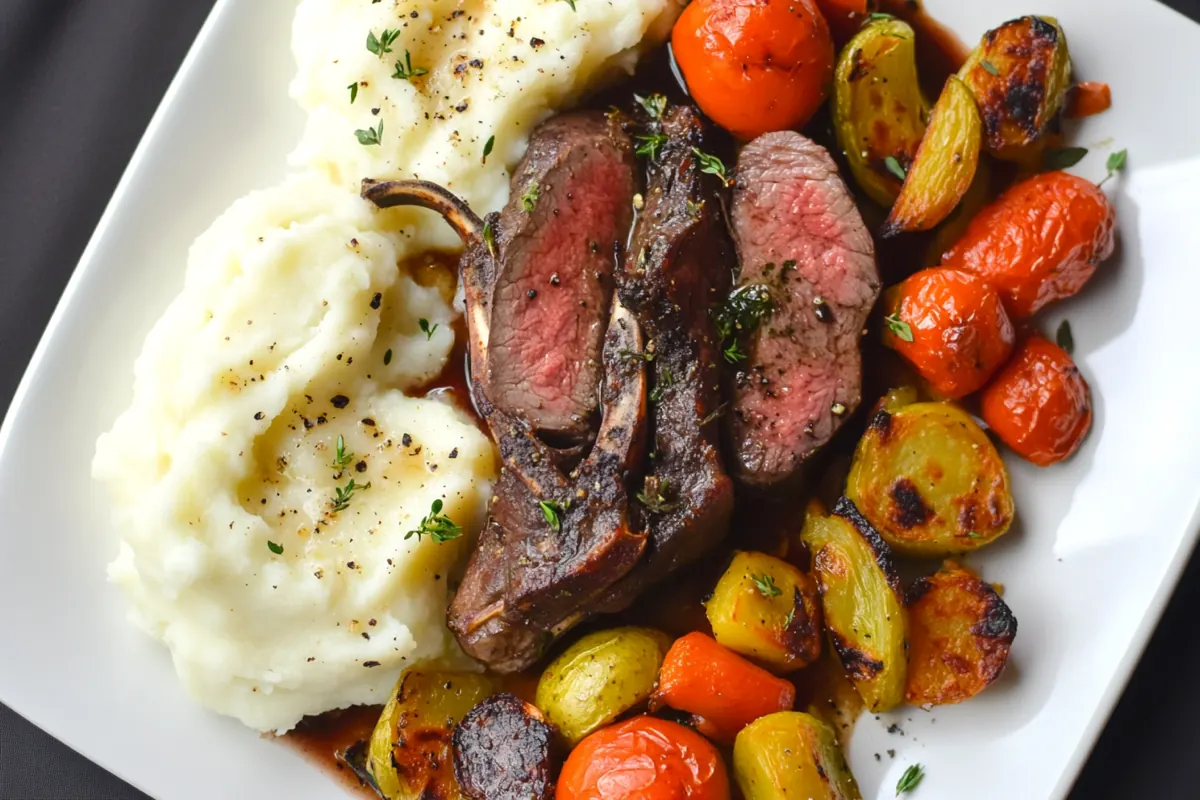When it comes to cooking venison tenderloin, many people want to know how to achieve the perfect balance of flavor and tenderness. This guide will provide you with expert tips and easy recipes to elevate your venison cooking game. Whether you’re looking for the best venison tenderloin recipe or simply want to try an easy deer tenderloin recipe, we’ve got you covered.
Table of Contents
Introduction to Venison Tenderloin
Venison tenderloin is a prized cut of meat, known for being exceptionally tender and flavorful. It comes from the back of the deer, where the animal’s muscles are least used. This makes the tenderloin one of the most desirable cuts for cooking.
What is Venison Tenderloin?
Venison tenderloin is the muscle that runs along the spine of the deer. It is lean and has a delicate texture, making it ideal for various cooking methods. This cut is often referred to as “backstrap,” but it’s important to note that it differs from other cuts in terms of tenderness and flavor.
Why Choose Venison?
Choosing venison over other meats can be a healthy and delicious option. Venison is generally lower in fat than beef or pork, and it is rich in protein, iron, and essential vitamins. Moreover, wild game like venison often has a unique flavor that stands out in culinary dishes.
Nutritional Benefits
Venison offers numerous health benefits. It is rich in protein, which supports muscle growth and repair. Additionally, it is a great source of iron, which is crucial for blood health. Because it is lean, venison can fit well into many healthy eating plans.
Flavor Profile of Venison
The flavor of venison is often described as rich and slightly gamey. This distinctive taste can be enhanced with various marinades and spices. Many chefs recommend pairing venison with robust flavors like garlic, rosemary, and juniper berries to complement its natural profile.
Easy Deer Tenderloin Recipe
Cooking venison tenderloin doesn’t have to be complicated. With the right ingredients and techniques, you can create a mouthwatering dish that impresses your guests.
Ingredients Needed
For a simple and delicious deer tenderloin recipe, gather the following ingredients:
- 1 pound venison tenderloin
- 2 tablespoons olive oil
- 2 cloves garlic, minced
- 1 tablespoon fresh rosemary, chopped
- Salt and pepper to taste
- Optional: Your choice of marinade (for enhanced flavor)
These ingredients provide a basic foundation for your venison tenderloin, allowing you to explore various flavors and cooking methods.
Step-by-Step Instructions
Follow these steps to prepare your venison tenderloin:
Preparing the Meat: Trim any silverskin from the tenderloin. This will ensure a more tender result. Rinse the meat under cold water and pat it dry with a paper towel.
Marinate (Optional): If you choose to marinate, combine the olive oil, garlic, rosemary, salt, and pepper in a bowl. Place the tenderloin in the bowl, ensuring it is well-coated. Cover and refrigerate for at least 30 minutes, or up to overnight for deeper flavor.
Cooking Methods Overview: You can cook venison tenderloin using various methods including grilling, pan-searing, or roasting in the oven. Each method brings out different flavors and textures.

Best Venison Tenderloin Recipe
To truly master cooking venison tenderloin, knowing the best recipe is essential. A well-marinated and expertly cooked tenderloin can transform your meal into a gourmet experience. Let’s explore how to achieve this.
Marinating Venison Tenderloin
Marinating is a fantastic way to enhance the flavor and tenderness of venison. The marinade penetrates the meat, adding moisture and complementing the natural flavors. For the best results, aim to marinate for at least a few hours, or even overnight if time allows.
Recommended Marinades
Here are a few marinades you can try:
- Garlic and Rosemary Marinade: Combine olive oil, minced garlic, chopped fresh rosemary, salt, and pepper. This classic marinade pairs wonderfully with venison, accentuating its flavor.
- Soy Sauce Marinade: Mix soy sauce, honey, minced ginger, and garlic. This marinade adds a sweet and savory profile that complements the meat’s natural richness.
- Balsamic Vinegar Marinade: Combine balsamic vinegar, olive oil, minced garlic, and thyme. The acidity in the vinegar tenderizes the meat while adding a delightful tang.
Cooking Venison Tenderloin in the Oven
Cooking venison tenderloin in the oven is an excellent method to achieve a perfectly cooked piece of meat. This approach allows for even cooking and a tender texture.
Oven Cooking Temperature
The ideal temperature for cooking venison tenderloin in the oven is around 325°F (163°C). This moderate heat ensures the meat cooks through without drying out. Using a meat thermometer can help you achieve the perfect internal temperature.
Time and Techniques
Cooking time can vary based on the thickness of your tenderloin. Generally, a 1-pound tenderloin will take about 20 to 25 minutes to reach medium-rare (about 130°F to 135°F internal temperature).
- Preheat the Oven: Start by preheating your oven to 325°F (163°C).
- Sear First: For added flavor, consider searing the tenderloin in a hot skillet with olive oil for 2 to 3 minutes on each side. This creates a delicious crust.
- Roast: After searing, transfer the tenderloin to a roasting pan and place it in the oven. Use a meat thermometer to check for doneness.
- Rest: Once cooked, allow the meat to rest for about 5 to 10 minutes before slicing. This helps retain the juices, resulting in a more flavorful bite.
Venison Tenderloin Recipe Grill
Grilling venison tenderloin is another fantastic way to prepare this delicious cut of meat. The high heat from the grill creates a beautiful char while keeping the inside tender and juicy.
Preparing the Grill
Before you start grilling, it’s important to prepare your grill properly:
- Clean the Grate: Ensure your grill grates are clean to prevent sticking.
- Preheat: Preheat your grill to high heat (around 400°F to 450°F) for direct grilling.
Grilling Techniques
- Sear the Meat: Place the marinated tenderloin directly over the heat and sear for 3 to 4 minutes on each side. This helps lock in flavor.
- Indirect Heat: After searing, move the tenderloin to a cooler part of the grill for indirect cooking. Close the lid and grill for an additional 10 to 15 minutes, or until the internal temperature reaches 130°F to 135°F for medium-rare.
- Resting: Just like when cooking in the oven, allow the tenderloin to rest after grilling. This step is crucial for juicy results.
By following these marinating and cooking techniques, you can create an unforgettable venison tenderloin dish that highlights its unique flavors.

Serving Suggestions for Venison Tenderloin
Once you’ve successfully cooked your venison tenderloin, it’s time to think about how to serve it. Pairing the right sides and sauces can elevate your meal, making it a memorable experience. Here are some ideas to complement your tenderloin.
Sides that Pair Well
Choosing the right sides enhances the overall dining experience. Here are some delicious options that go well with venison tenderloin:
- Roasted Vegetables: Carrots, Brussels sprouts, and sweet potatoes roasted in olive oil provide a sweet and savory contrast to the meat’s richness.
- Mashed Potatoes: Creamy mashed potatoes are a classic side that balances the flavors. For an added twist, try garlic or herb-infused mashed potatoes.
- Wild Rice Pilaf: Wild rice, cooked with herbs and nuts, adds a nutty flavor and texture that pairs beautifully with venison.
- Seasonal Greens: Lightly sautéed greens, such as spinach or kale, can provide a fresh contrast to the richness of the tenderloin.
These sides not only complement the venison but also add color and nutrition to your plate.
Sauces and Condiments
Adding a sauce or condiment can bring another layer of flavor to your venison tenderloin. Consider these options:
- Red Wine Reduction: A classic sauce made by reducing red wine, shallots, and beef stock, it adds depth and richness to the dish.
- Balsamic Glaze: A drizzle of balsamic glaze enhances the sweetness of the venison while providing a beautiful presentation.
- Herb Butter: Compound butter made with herbs and spices can be melted over the hot tenderloin, adding flavor and richness.
- Mustard Sauce: A creamy mustard sauce adds a tangy kick that contrasts nicely with the meat’s natural sweetness.
Experimenting with these sauces can help you find the perfect pairing for your venison tenderloin.
Common Mistakes When Cooking Venison Tenderloin
Even the most experienced cooks can fall prey to common mistakes when preparing venison tenderloin. Here are three pitfalls to avoid to ensure a successful dish.
Overcooking and Dryness
One of the most common mistakes is overcooking venison. Since it is a lean meat, it can dry out quickly if cooked too long. Always use a meat thermometer to check the internal temperature. Aim for 130°F to 135°F for medium-rare to keep it juicy and tender.
Not Resting the Meat
Many home cooks overlook the importance of resting meat after cooking. Resting allows juices to redistribute throughout the meat, making each slice more flavorful and moist. Let your venison tenderloin rest for at least 5 to 10 minutes before slicing.
Ignoring Flavor Enhancements
Venison has a unique flavor that can be enhanced with the right seasonings and marinades. Don’t skip the marinating step or use bland seasonings. Experiment with herbs, spices, and marinades to find combinations that highlight the meat’s natural taste.
By avoiding these common mistakes, you can ensure that your venison tenderloin is not only cooked properly but also bursting with flavor.

Conclusion: Mastering Venison Tenderloin
Cooking venison tenderloin can be a rewarding experience. With its rich flavor and tender texture, this cut of meat offers plenty of culinary opportunities. By following the techniques outlined in this guide, you’ll be on your way to creating a delicious venison dish that impresses friends and family.
Final Tips for Success
- Don’t Rush the Process: Take your time when marinating and cooking. Rushing can lead to overcooked or bland meat.
- Use Quality Ingredients: Fresh herbs, high-quality olive oil, and a good cut of meat make all the difference in flavor.
- Get Creative: Don’t hesitate to experiment with different marinades, sauces, and cooking methods. Each attempt can lead to delicious discoveries.
Encouragement to Experiment with Recipes
Cooking is about exploration and enjoyment. Don’t be afraid to try new flavors and techniques. Whether you’re following an easy deer tenderloin recipe or crafting your own, each dish is an opportunity to learn and improve your skills. So gather your ingredients and start cooking venison tenderloin today!
FAQ
As you delve into the art of cooking venison tenderloin, you might have some questions. Here are some common inquiries that many home cooks have:
What Temperature Do You Cook Deer Tenderloin At?
The ideal cooking temperature for deer tenderloin is around 325°F (163°C). This temperature allows for a gentle cooking process that helps retain moisture while ensuring that the meat reaches a perfect doneness. Using a meat thermometer is essential; aim for an internal temperature of 130°F to 135°F for medium-rare.
What is the Best Method for Cooking Venison?
The best method for cooking venison can vary depending on personal preferences. However, popular options include grilling, roasting, or pan-searing. Each method has unique benefits. Grilling imparts a smoky flavor, while roasting allows for even cooking. Pan-searing creates a delicious crust on the outside. Experiment with different methods to find your favorite.
What Do You Soak Deer Tenderloin In?
Soaking deer tenderloin can help remove any gamey flavors and enhance tenderness. Common soaking solutions include milk, buttermilk, or a mixture of water and vinegar. Soak the meat for a few hours or overnight to achieve the best results. This step can significantly improve the flavor and texture of your venison.
What is the Difference Between Backstrap and Tenderloin?
While the terms “backstrap” and “tenderloin” are often used interchangeably, they refer to different cuts of meat. The backstrap is the muscle that runs along the spine and is typically larger. In contrast, the tenderloin is a smaller, more tender cut found beneath the backstrap. Both cuts are delicious but may have slightly different textures and cooking requirements.




